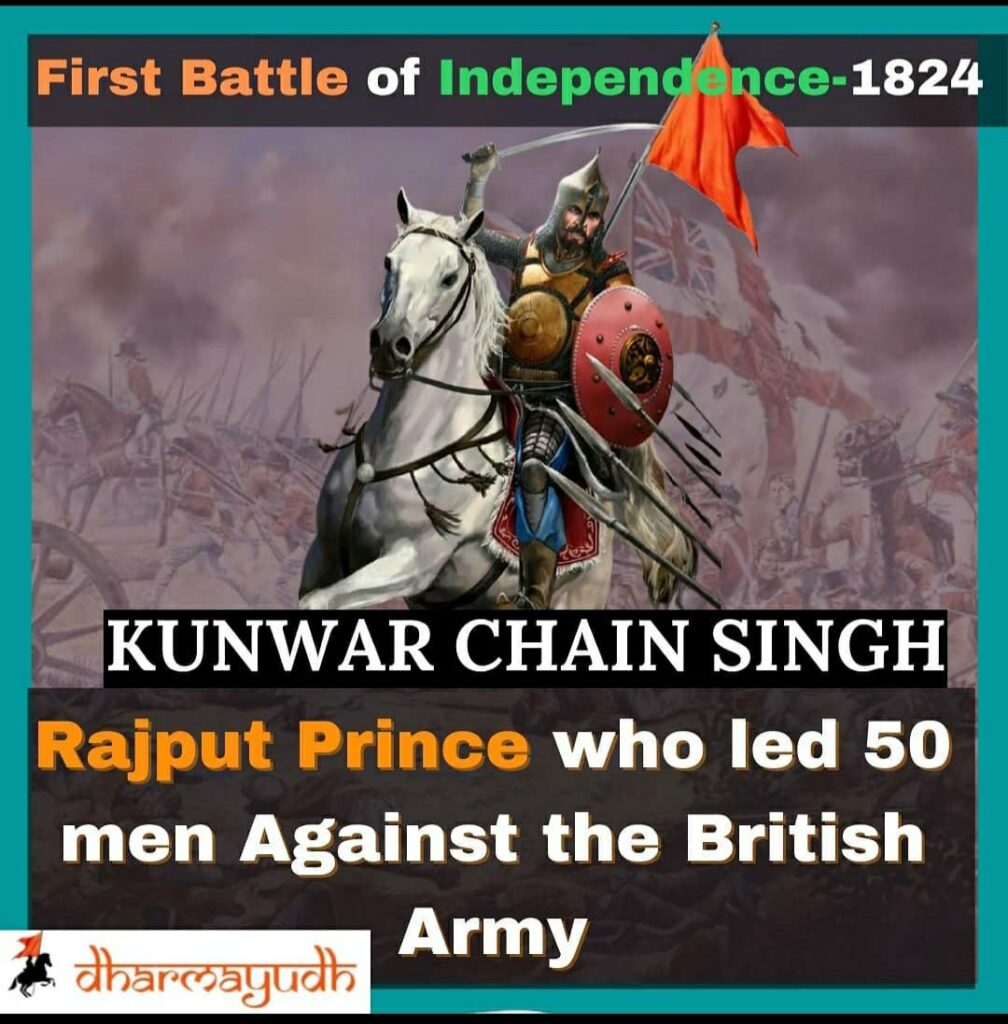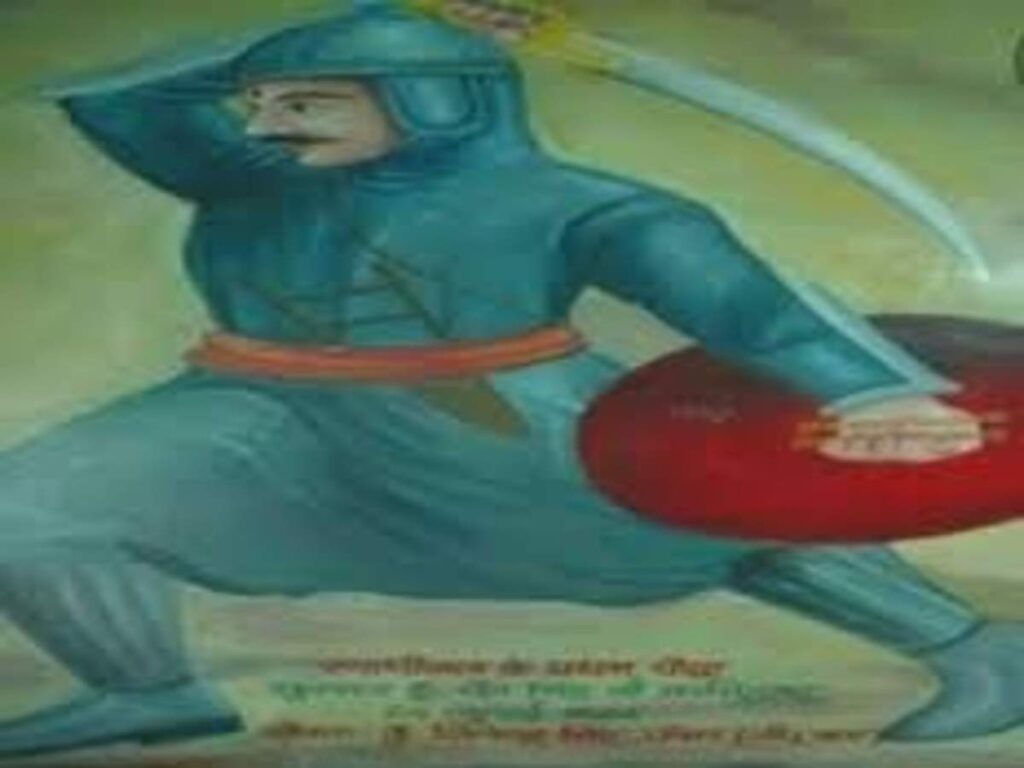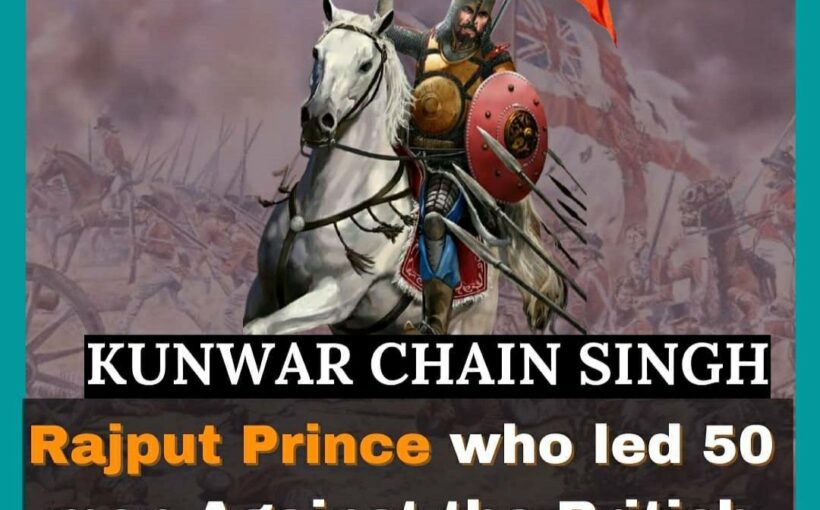The Revolt of 1857, also known as the First War of Independence, is regarded as the first-ever armed insurrection against British authority in India. From the beginning, we had listened to the stories of Rani Lakshmi Bai, Nana Saheb, Mangal Pandey, Begum Hazrat Mahal, Khan Bahadur Khan, Veer Kunwar Singh, and Tantia Tope, etc. And the list goes on.

All these freedom fighters laid down their lives for the attainment of Swaraj. But we also know that there are some freedom fighters whose sacrifice had been long forgotten and their stories of ultimate sacrifice are yet to be told.
In this article, we will be covering the story of a 24-year-old Rajput prince who led an army of only 50 soldiers and declared war against the British invaders. The battle led by a young Rajput king took place 33 years before the revolt of 1857 i.e. in 1824 and was the first-ever armed rebellion against the British authority.
Content
Background: Early life of Veer Kunwar Singh
In reality, this insurrection should be regarded as the first war of Independence in a real sense. The name of this young and brave Rajput king was KUNWAR CHAIN SINGH (not to be confused with Kunwar Singh of 1857 revolt). Not to be confused with Veer Kunwar Singh of the 1857 revolt.
Not enough information is available on the early life of Kunwar Chain Singh.
Kunwar Chain Singh was the prince of Narsinghgarh province. He was Rajput, who was the son of Rawat Sobhag Singh and was married to Rajawati. He took the charge of the administration of his kingdom after his father fell ill. In the year of 1818, there was an agreement signed between the Nawab of Malwa and the East Indian Company. After this agreement, the East Indian Company established about 1000 cantonments in that region.

For the protection of these cantonments, the company declared Maddock the Political agent as the caretaker of these camps. The princely state of Narsinghgarh was on the radar of the British company as by now they had conquered almost all of India and had established their administration over several regions.
Furthermore, the treaty which was signed between the Nawab of Malwa and the East Indian Company allowed the British to have political rights over the region of Rajgarh and Narsinghgarh. Kunwar Chain Singh refused this decision and looked towards this as the symbol of shame and slavery.
To counter the British authorities Chain Singh decided to organize secret meetings with neighboring kings. Furthermore, he also established a strong Spy unit to identify the traitors in his camp.
Note: Indians had suffered a lot due to the betrayals of their own people. Battle of Tarain and Battle of Plassey are the two famous examples of it. However, the great philosopher of ancient India Kautilya or Chanakya strictly focused on the establishment of a Spy unit for the betterment of a kingdom.
Due to his loyal spies, Kunwar Chain Singh was able to identify two traitors in his group. The chief minister of Narsinghgarh court Anand Ram Bakshi sided with the British authorities and even provided them valuable information about the Chain Singh’s possible plans. Hearing this news Kunwar Chain Singh immediately killed Anand Ram Bakshi.
Later, another minister named Roop Ram Bohra was also killed by the prince as he had done the same act of betrayal as the chief minister did.
Note: It is believed that the brother of Roop Ram Bohra complained about the assassination of his brother to the then Governor-General of Bengal.
Entry of the British
Due to this, Governor-General then entrusted Maddock the British’s political agent to held a talk with Kunwar Chain Singh. The place of the meeting was decided to be Bairasia. Kunwar Sahab had a habit of carrying two swords and during the meeting, Maddock asked the reason behind it. The chivalrous Rajput prince replied
“One sword is for those Indians who had betrayed his motherland and one sword is for cutting the throats of the British Raj”
Furious from this reply Maddock presented 3 conditions to Chain Singh.
1 First one was that he should leave Narsinghgarh
2 From now the state of Narsinghgarh will be under the British rule
3 Now only the British have the right to buy opium in Narsinghgarh.
But Brave Kunwar Sahab denied all the demands and Maddock decided to arrange another meeting with the Rajput prince which proved to be last.
Battle of Sehore
On 24th June 1854 at Sehore (in present-day Madhya Pradesh) both sides meet again. The young prince was sure that now the war is inevitable and he came prepared wearing full body armor with his loyal army of 50 soldiers which were armed with only swords. The two loyal soldiers worth mentioning were Himmat Khan and Bahadur Khan.
Maddock was sure that any slightest of error can decide his faith so initially, he played his psychological trick i.e to disarm Kunwar Chain Singh through his verbal talks.
Maddock asked Chain Singh to give the sword which the latter carried for cutting the British officials’ throats. Kunwar Saheb was aware of the threat and prepared himself after giving his first sword to the British official. As soon as he gave his first sword to Maddock, he (Maddock) attacked Chain Singh, but Chain Singh responded, and chaos ensued.
Maddock immediately retreated after this but Chain Singh followed him. Although the swords and the strength of only 50 soldiers were no match against the British. But the engagement lasted for hours. This engagement can be termed as the battle of Sehore. The British had already established well-positioned cannons in this region. Young Chain Singh having the skills of a Rajput warrior killed 25 British soldiers from his Rajputana Sword.
During the battle, one British soldier was about to pull the artillery gun’s trigger on Chain Singh’s soldiers. Seeing this the young Rajput immediately went towards the artilleryman who cut off his head along with the cannon. One by one the soldiers of Chain Singh including Himmat khan and Bahadur khan attained martyrdom. At last only Chain, Singh remained on the battlefield.
By now the 24-year-old Rajput prince was heavily wounded who reached Dussehra Garden. It is here he attained martyrdom after killing 25 British Soldiers. Maddock seeing the bravery of this young prince took his sword back to England. Today there the Dussehra Garden is a tourist spot.
Rani Lakshmi Bai was also inspired by the tale of Kunwar Chain Singh and even asked Narsinghgarh’s ruler during the revolt of 1857. While we remember Mangal Pandey’s name as the main person behind the revolt of 1857 we should not forget the name of Chain Singh and his brave 50 soldiers who launched the same type of rebellion against the British Raj 33 years before.
LIKE WHAT WE ARE DOING? DONATE TO DHARMAYUDH !
If you Support what we are doing and would like to contribute to help us grow and reach more Indians to teach them more about such forgotten historic Indian Heroes and stories, please consider donating any amount. It will help us grow

